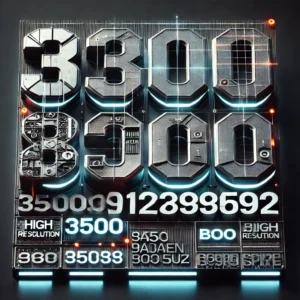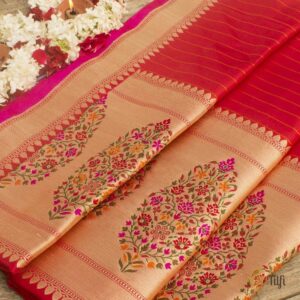
In the world of anime and otaku culture, the term “waifu” has become a beloved and frequently used concept. For many fans, a waifu isn’t just a fictional character—they’re a symbol of admiration, connection, and sometimes even romance. Whether you’re new to anime or a seasoned fan, understanding waifu culture offers a fascinating glimpse into how anime fandom continues to evolve and thrive.
This article explores what a waifu is, the history of waifu culture, and why this concept has become so meaningful to anime fans around the world. We’ll also touch on how communities like those found through The Otaku Box keep the waifu conversation alive and thriving.
What Is a Waifu?
The term “waifu” originates from the English word “wife,” adapted and popularized within the anime and manga fandom. It generally refers to a female character from an anime, manga, or video game whom a fan feels a deep affection for. While the male counterpart is often referred to as a “husbando,” waifu culture tends to take center stage in anime communities.
Fans may consider their waifu to be the character they admire most, often for their personality, appearance, or story arc. For some, it’s a fun way to express their fandom, while for others, it represents a deeper emotional bond with a character who inspires or resonates with them.
The Origins of Waifu Culture
The concept of having a fictional “wife” isn’t entirely new—literature and media have long included characters who capture the imaginations of readers and viewers. However, waifu culture as we know it today became prominent in the early 2000s, thanks in part to the growing popularity of anime globally.
The term “waifu” itself gained traction from a scene in the anime Azumanga Daioh, where a character points to a photo and says, “My wife.” The phrase was misheard as “waifu” by fans, and it quickly caught on in internet forums. Over time, the idea expanded into a broader cultural phenomenon that celebrates anime characters in unique and personal ways.
Why Waifu Culture Matters
Waifu culture is more than just a quirky fandom trend—it’s a reflection of how people connect with stories and characters on a personal level. Here are some reasons why waifus are so meaningful to fans:
- Emotional Connection: Fans often admire their waifus for their personalities, values, or how they handle challenges in their fictional worlds. This emotional bond can feel incredibly real, even if the character isn’t.
- Escapism: For many, waifu culture is a way to escape the stresses of daily life and immerse themselves in the imaginative and idealized world of anime.
- Expression of Fandom: Celebrating a waifu is often a way to show devotion to a particular series or genre, through art, cosplay, or even collecting merchandise.
Waifu Culture in Otaku Communities
Waifu culture thrives in otaku communities, both online and in real-life spaces like conventions. Social media platforms, forums, and dedicated subreddits give fans places to discuss their favorite waifus, share fan art, and even engage in friendly debates about which waifu is the “best girl.”
Conventions and events also play a big role, with cosplay allowing fans to bring their waifus to life. These gatherings foster connections among fans who share a deep appreciation for anime and its characters.
The Role of The Otaku Box in Waifu Culture
For fans looking to deepen their connection to their favorite characters, The Otaku Box offers a unique way to celebrate waifu culture. This monthly subscription box delivers exclusive anime figures, wall scrolls, and other merch featuring fan-favorite waifus.
One of the standout features of The Otaku Box is its fan-voted customization. Subscribers can vote on which characters—often popular waifus—will be featured in upcoming boxes. This ensures that the items reflect the preferences of the anime community, making it a perfect fit for fans who are passionate about their waifus.
Beyond the merch, The Otaku Box fosters a thriving anime community where fans can share their love for anime and connect over their favorite waifus. Whether you’re showcasing your new Zero Two wall scroll or discussing why Albedo is best girl, it’s a great place to engage with like-minded otakus.
How Waifu Culture Influences Anime Merch
Waifu culture has had a significant impact on the anime merchandise industry. From detailed figures and posters to keychains and even body pillows, there’s no shortage of products that cater to fans’ devotion to their favorite characters.
Platforms like The Otaku Box make it easy for fans to access exclusive, high-quality merch, ensuring that their collections feel personal and meaningful. The rise of waifu culture has also inspired countless fan artists to create custom art and accessories, further enriching the community.
Criticism and Misunderstandings
While waifu culture is widely celebrated, it has also faced criticism and misunderstandings, particularly from those outside the anime fandom. Some view it as overly obsessive or strange, but for most fans, it’s simply a harmless way to express their love for anime.
At its core, waifu culture is about celebrating characters who bring joy, inspiration, and connection into people’s lives. It’s a deeply personal aspect of fandom that’s unique to every individual.
Conclusion
Waifu culture is a fascinating and heartfelt part of anime fandom, blending admiration, creativity, and community. Whether you’re a casual fan or deeply invested in your favorite waifu, this phenomenon highlights the power of storytelling and how it connects us to fictional characters in meaningful ways.
For those eager to celebrate their waifu or discover new ones, communities like those found through The Otaku Box are a perfect place to start. With exclusive merch, fan-voted designs, and an active community, The Otaku Box keeps waifu culture alive and thriving for fans around the world.







